Mobile SEO is an essential aspect of any successful digital marketing strategy. And it’s easy to see why.
Mobile devices have become the primary means of accessing the internet for the majority of users worldwide.
As a result, search engines like Google have shifted their focus to prioritize mobile-friendly websites, introducing mobile-first indexing.
In this article, we will explore the key elements of mobile SEO and provide actionable insights to help you optimize your website for mobile-first indexing.
By implementing these techniques, you can improve your website’s visibility, user experience, and ultimately, your search engine rankings in the mobile-dominated digital era.
Let’s start with a definition.
In This Article
What is Mobile SEO?
Mobile SEO is the practice of optimizing a website to improve its visibility and ranking on search engine results pages (SERPs) specifically for mobile devices.
This involves tailoring the website’s design, structure, content, and performance to provide an optimal user experience on smartphones and tablets, while also adhering to search engine guidelines and best practices for mobile-first indexing.
Mobile SEO vs. Desktop SEO: What’s the Difference?
Any search engine optimization actions can benefit rankings regardless of what type of devices are use to access your site. So the bulk of what you’ll do to optimize for mobile SEO is simply on-page SEO. And we’ll walk through these actions shortly.
But because mobile devices are often used to find local businesses and because their screen sizes are narrow, these SEO tactics become even more crucial:
- Optimizing for local SEO
- Front-loading your title with your keyword
- Optimizing page loading speed.
Learn more in our guide on mobile SEO vs. desktop SEO.
Why is Mobile SEO Important?
So why should you bother learning about mobile SEO? Check out these surprising statistics.
1. Increased Use of Mobile Devices
More people search online using mobile devices than desktop. An estimated 59% of all web traffic comes from mobile.
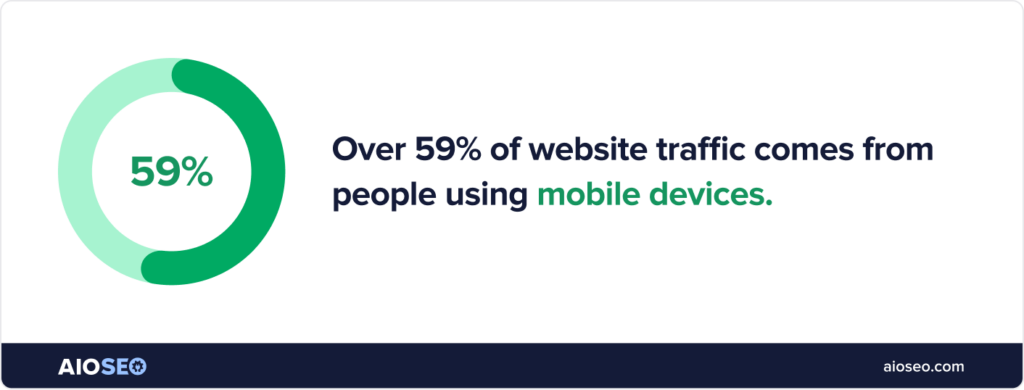
By next year, an estimated 72% of the world will access the internet solely via smartphones.
This trend toward mobile led to Google’s mobile-first indexing initiative.
2. Mobile-First Indexing
Starting in 2016, Google began using the mobile version of a website’s content to rank pages in search results, rather than the desktop version.
Google crawls and indexes the mobile version first. So if your website isn’t optimized for mobile devices, it could negatively impact your search rankings, even for desktop searches.
Essentially, your mobile site is considered the primary version of your website by Google.
3. Local Sales
Mobile use also has huge impact on local businesses.
- 76% of locals visit a business within a day of finding it via a search on their mobile device.
- Per Google, “28% of those searches result in a purchase.”
Factors of Good Mobile Site Design
There are 4 critical design factors that can make your mobile site fly and enhance mobile SEO.
1. Page Loading Speed
Mobile users are often multi-tasking, waiting in line, or on the move. They’re impatient. Their expectations are set by the fastest-loading sites. And with 5G rolling out, consumers expect nearly-instantaneous loading of sites and apps.
In addition, how fast your site loads can impact its ranking.
2. Simple Navigation
Since mobile screen widths are small, strive to make your navigation simple and intuitive. And consider reducing the main navigation items in the mobile version of your site.
3. Large Buttons
Whether they’re for booking a reservation or ordering something, make sure your buttons, when viewed on a smartphone, are large and easy to tap.
4. Short Checkouts
Likewise, be sure your checkouts, when executed on a smartphone, have minimal steps and are easy to complete.
How to Get a Great WordPress Mobile Design
So, you’re a WordPress user, and want all that. How do you get it? Good question!
Here are 2 options: DIY or outsource.
1. DIY: Pick a High-Performing Template
The nice thing about WordPress is you can get a site redesign with a few button clicks.
This is done by choosing a theme (for instance, from a theme marketplace), downloading it, and uploading it to the themes section of your WordPress website.
Then you make it your default theme, and voila, your site looks totally different.
When picking a theme, you’re going to want one that’s been coded to load fast. These themes will usually advertise themselves as getting high PageSpeed Insights scores, out of the box.
Here are some page builders to explore. (These come bundled with many pre-built website options).

2. Choose Custom Design Services
Some users just want to outsource all this. We get it. And there can be good reasons to outsource.
For instance, there’s more to launching a new site than just getting a theme.
- Structure: The structure of your current site may be completely different from what’s available out-of-the-box with the new theme.
- Content: There may be new areas in the theme that need new content
- Checkout: Need a secure checkout or donation solution? There are great plugins for this, like WP Charitable and WP Simple Pay Pro. But you can also get this set up for you.
For outsourcing, we recommend Boston’s Seahawk Media. They’ll create a site from scratch, do a redesign, and assist with any WordPress needs. All at budget-friendly prices.
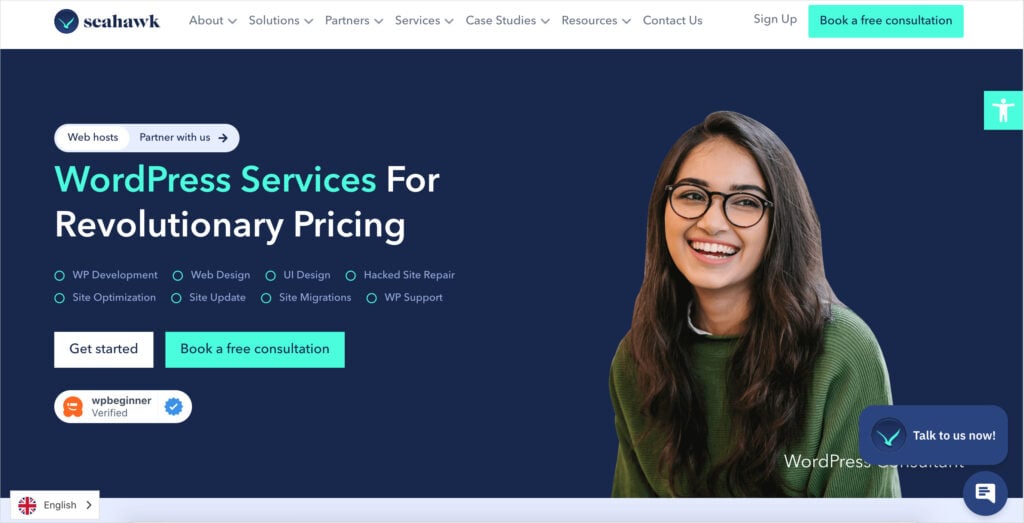
Useful Mobile SEO Tools
As we mentioned, good SEO benefits desktop and mobile users. So the first two of my recommendations are for SEO tools that fit that bill.
The last tool may surprise you. I’ll explain why I included it.
1. All in One SEO Plugin
All in One SEO (AIOSEO) is a complete SEO plugin offering analysis and clear action steps.
It’s designed to be simple enough for a beginner to use on day 1. But it’s also powerful enough to have attracted professional marketers and big brands.
Staring at $49.60/year, this software is a steal.
2. Google PageSpeed Insights
This free tool will show you how fast (or slow) you site loads on mobile devices.
One thing I love about PageSpeed Insights is it provides a detailed list of exactly what to do to improve your site’s speed and performance.
Be aware though, these recommendations are for web professionals and it’s unlikely most consumers will understand them.
So you have 2 options.
- Hire a developer to execute the fixes
- Choose a WordPress theme that already loads fast.
3. Your Mobile Phone
Navigate through your website using your mobile phone. Respond to any calls-to-action.
Are the forms easy to fill out on mobile? Is the checkout easy? How about the newsletter signup?
Using your own phone to browse your site is a powerful way to get instant insight into what’s working well and what’s not.
Now, let’s get into the nitty-gritty of how to optimize your site.
How to Optimize Your WordPress Website
I don’t know about you, but I like to find the easiest way to do things. But I’m picky. I want it to be easy and excellent.
When it comes to optimizing WordPress websites, that means using an SEO plugin.
I use and recommend the All in One SEO (AIOSEO) plugin.
About All in One SEO
This plugin automates most of the analysis that needs to be done, and delivers clear action steps.
What I really like is, AIOSEO makes these action steps easy. If you can click buttons and fill out form fields, you can optimize your site. And this can save you thousands of dollars.
All in One SEO is an established plugin with thousands of 5-star reviews on WordPress.org. Over 3 million people are currently using it.

Once you install the plugin it shows up as a sidebar when you’re logged into the WordPress editor.
Navigate to any page you want to optimize, and you’ll find an SEO score for that page at the top right of the sidebar.
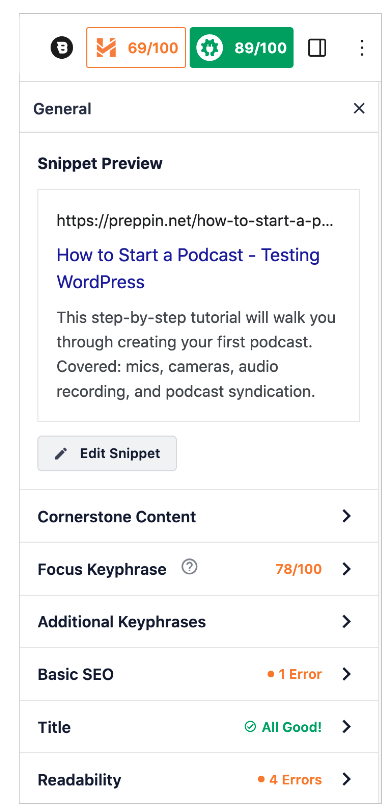
Scroll down the sidebar and click on a tab, like Focus Keyphrase or Basic SEO.
Then you’ll see the plugin’s recommendations.

As you act on the plugin’s recommendations, your SEO score goes up.
The goal isn’t to get 100. Anything around 70 and above is good. The score helps you to be consistent in acting on AIOSEO”s recommendations. And as you learn by doing, you’ll find your writing improves too. And that means your optimization will go faster.
I currently use AIOSEO to optimize all my published content. It only takes around 15 minutes for me to optimize a piece.
And I continue to see results.
For instance, this piece, optimized with AIOSEO, landed the featured snippet for the keyword “seo vs social media.” That’s out of 800+ million results.

AIOSEO will cover all the vital aspects of SEO mentioned above, including:
Let’s walk through how to optimize your site.
Then we’ll look at issues specific to mobile SEO.
1. Use Short Introductions
This one is self-explanatory. Get to the point quickly.
2. Use the Inverted Pyramid
For most consumer content, using the inverted pyramid style is wise. But this becomes even more important for small screens.
The inverted pyramid method of writing puts the most important information at the top of the page.
Why it’s important: While many site visitors don’t bother scrolling down a page, this lack of scrolling is common with mobile users.

2. Optimize CTAs
A CTA is a call-to-action. This is an action that you want web visitors to take, such as:
- Entering their email address to get a discount
- Registering for an online or in-person event
- Providing their email address to get something free (like an ebook)
- Signing up for an email newsletter.
CTAs are crucial for moving visitors from the “See” stage to “Thinking” about what you have to offer. (Learn more about the See-Think-Do model.)
To optimize CTAs:
- Pace them at the top.
- Make sure buttons are large enough and links are easy to tap
- Make sure forms are easy to fill out on mobile devices.
Remember that the more information you ask from people, the more will decline to fill out your form. Mobile users will be more impatient. So consider editing your CSS so that a different mobile form appears specifically designed for impatient users.
For instance, an email signup for mobile users could ask only for their email address or their email address and first name only, not first and last name.
Pro tip: Make sure you use mobile-friendly forms.
4. Write in Plain English
Leave the flowery prose for that novel you’re writing. Follow George Orwell’s 6 rules for writing.
And when you optimize your page with AIOSEO, pay attention to the Flesch Reading Ease Score. This is visible in the Readability tab of the AIOSEO sidebar.
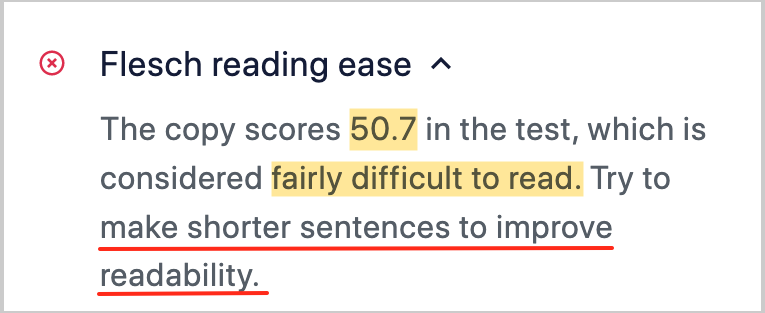
5. Use Short Paragraphs and Sentences
Short paragraphs and sentences make reading on mobile devices easier.
In particular, short paragraphs allow for more whitespace. By contract, long paragraphs can make it easy for mobile readers to get lost.
Here again, AIOSEO’s Readability checks include whether or not you’re using short paragraphs and sentences.
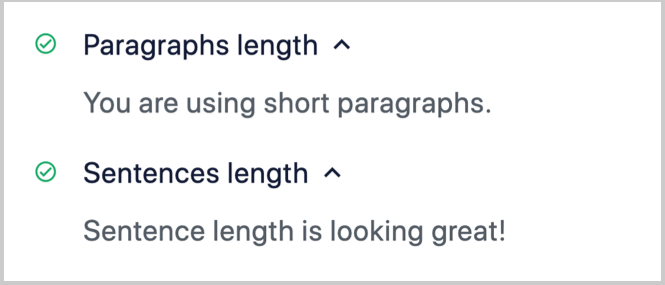
6. Front-Load Your Keyword in the Title
Whenever possible, place your target keyword at the beginning of your title.
Remember, mobile screen sizes are narrow. When scrolling through search results, users may only focus on the first words of titles.

search term “white hydrogen” have that keyword
in their title.
In the AIOSEO, under the Title tab, you’ll find this check.
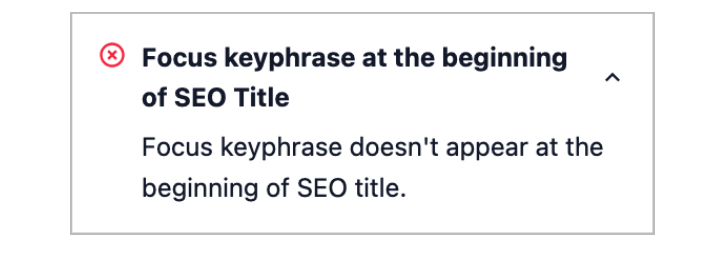
Use your judgment when front-loading your keyword. There will be times when this doesn’t make sense for a specific keyword.

keyword front-loaded in title.
7. Use Your Focus Keyword Well
Using your keyword well can keep your content focused and help users and search engines immediately detect the main topic.
The AIOSEO plugin will check to see you’ve used your keyword in your:
- Title
- Meta description
- First sentence
- Some subheadings
- Alt text (if relevant)
If your focus keyword is missing from any of these areas, AIOSEO will recommend adding it.
In addition, the plugin’s Keyword Density checker will alert you to overuse of a keyword (which can indicate keyword stuffing) or underuse.
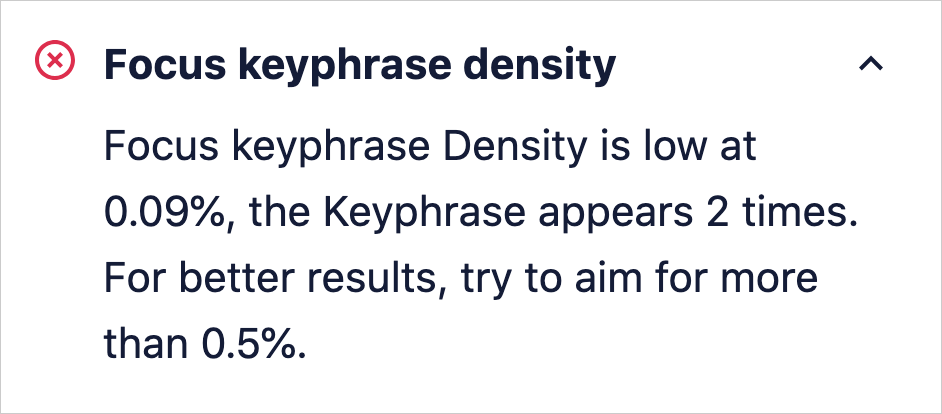
As with all automated tools, always use your judgment when taking action. If the plugin recommends adding more instances of your keyword to subheadings, and that would make your copy sound awkward, then skip the recommendation.
8. Apply Structured Data
You can think of structured data as “tags” that only search engines can see. These tags are added with code called schema markup.
This code helps Google understand your page better and rank it for relevant keywords. Some types of schema produce rich results. A rich result is a search snippet that has images, tart ratings, shipping or product details, and other features missing from standard snippets.
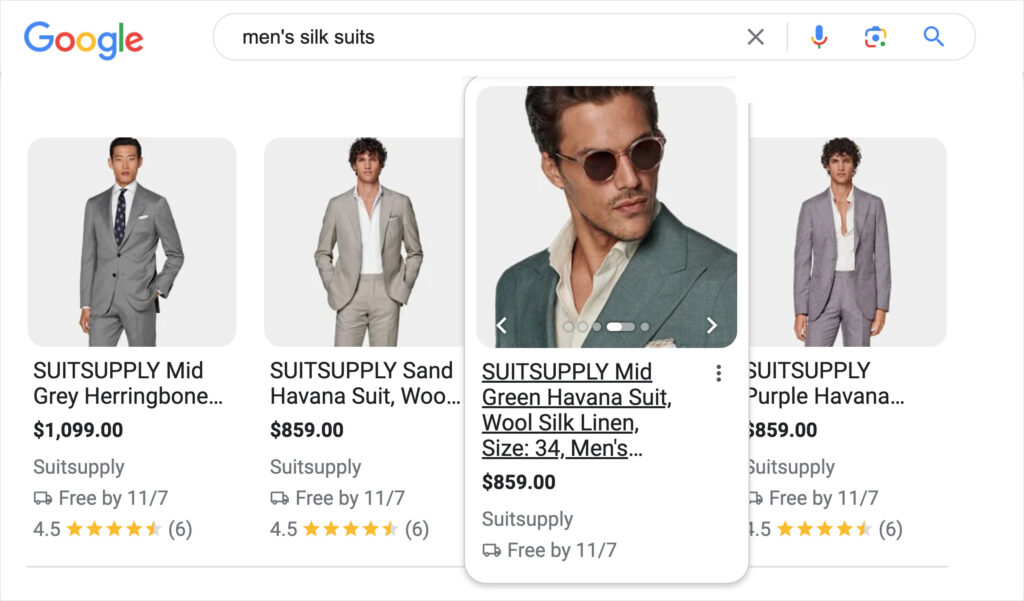
AIOSEO allows you to add schema markup to pages easily, by clicking some buttons.
First, you can browse the list of available schema. These are sorted by categories like:
- Recipe schema
- Events schema
- Course schema
- And so on.
When and if you find an applicable schema, you simply add it to your page and save.
9. Make Your Content Scannable
Research has shown that most people don’t read web pages word-for-word. Instead, they scan to page, looking for elements that stand out, like:
- Subheadings
- Lists
- Images or video
AIOSEO checks for use of these items. This makes creating scannable content easier.
Looking for more details on optimization? Explore how to optimize your page with AIOSEO.
Mobile SEO Actions
Once you optimize your page using All in One SEO, what’s left to do?
Here are some aspects that can impact your mobile SEO.
Speed and Design
WordPress users can improve speed in some simple ways.
- Choose a fast theme: Installing a theme takes a couple of clicks. A theme gives you an entirely new site design. If your site’s slow, consider switching to a theme designed to lad fast. Some top options are SeedProd, Blocksy, and GeneratePress. These are actually page builders which offer you lots of pre-built sites to choose from.
- Try it out: When you install a theme from a page builder, use your mobile phone to interact with it. Are the buttons easy to tap? Is the navigation simple? If not, simply choose another design.
- Caching: Consider using a caching plugin like WP Rocket to compress images and speed site loading. Find out if your web host uses a CDN (content delivery network). This can speed up site loading too. And ask the host if they have any special caching technologies to offer you.
Use Mobile-Friendly Conversion Popups
This one is related to speed. To capture leads, use mobile-friendly popups. Our favorite tool for this is OptinMonster. We use it on our own site and credit it with helping us grow consistently.
OptinMonster gives you plenty of ready-to-go templates that look professional and are coded efficiently. There’s no need to worry about code bloat slowing down your page and dinging your conversion rates.
I’m a big fan of OptinMonster’s Exit-Intent popups. These popups only appear when a user is getting ready to leave your site.
The Link Between Local SEO and Mobile SEO
Because smartphones are often used to find local businesses, we need to cover local SEO.
Keep in mind, anything you do for local SEO is going to benefit all users.
My recommendations here are based on Google’s advice for improving local SEO.
1. Get and Optimize a Google Business Profile
Google Business Profiles are free. And they’re easy to set up.
Optimizing a Google Business Profile means:
- Filling it out correctly and completely
- Keeping it updated with new photos or announcements
- Asking for reviews and responding to new ones.
This is not hard, but you’d be surprised at the number of businesses that don’t do this.
I walk you through these steps in How to Use a Google Business Profile to Boost Local SEO.
When people search for your business name your Google Business Profile will appear, along with your website. Your profile will also appear in Google Maps searches.
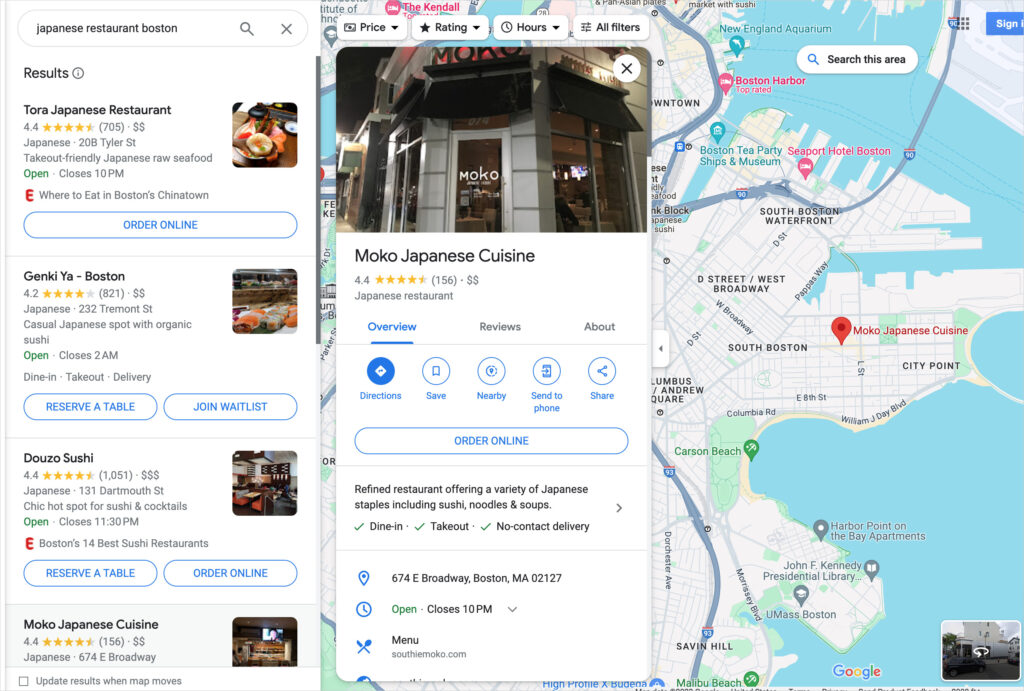
You can set up your Profile to make it easy for searchers to:
- Make reservations
- Book appointments
- Order takeout
- And more.

2. Manage Google Reviews Well
Google Reviews is the review platform most trusted by consumers, according to . . .
- 98% of searchers read online reviews
- Google Reviews are the most trusted reviews
- 73% of searchers are influenced by the presence of recent reviews
So managing your reviews is important. But the good news is, this is incredibly easy. Yet it’s another factor commonly overlooked by businesses.
To manage your reviews well you’ll pick a way to ask customers for reviews and you’ll respond in a timely way to all reviews.
Learn more in my how-to on managing Google Reviews.

3. Get Listed in Local Business Directories
This next step is simple too. Get your business listed in online directories.
Often these directories rank on page #1 for related searches. And Google likes seeing that your business has been vetted and is cited on multiple websites.
To make this happen, read our guide on getting local SEO citations. It costs very little to get a service to do this for you. You can easily do it for under $100.
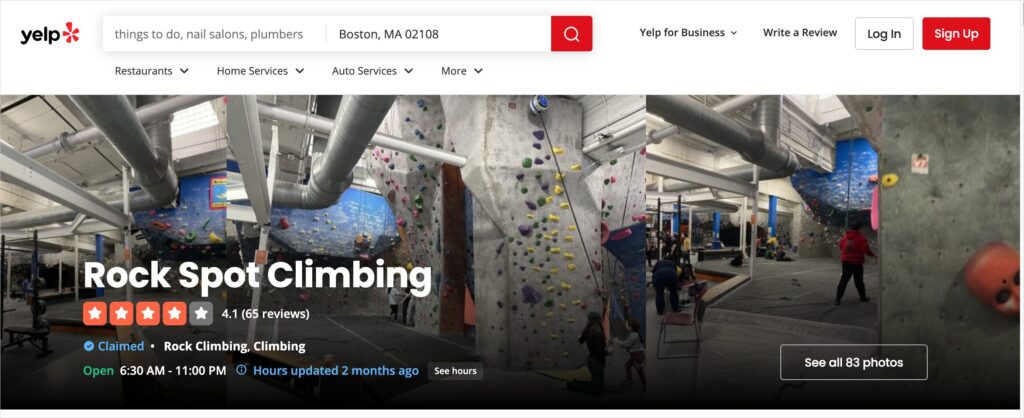
4. Keep Your NAP Consistent
This last point is related to directory listings. Keep your business contact information and operating hours accurate across the web.
This contact info is often called NAP which is short for Name, Address, Phone. NAP is understood to include email address, and website URL too.
Google may hesitate to rank your site high if you have inaccurate operating hours or conflicting contact information online.
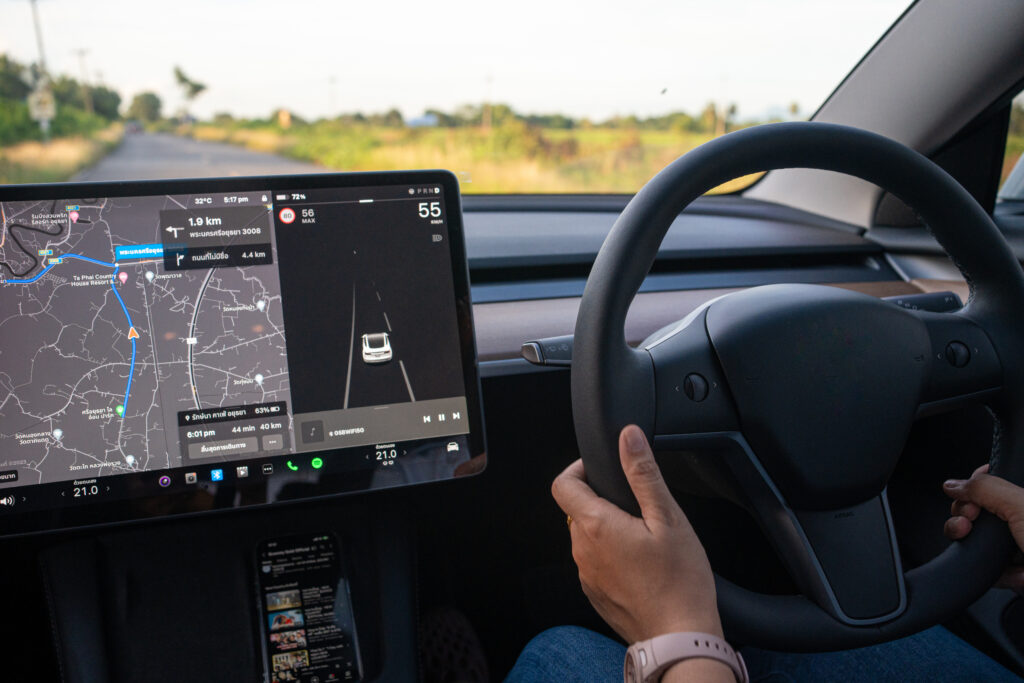
For instance, if you used to offer 24-hr services, but no longer do, update that information.
To ensure your NAP is consistent, you can log into the account you’ll create to get your directory listings. When some aspect of your NAP changes, ask the service to update your info across all directory listings.
When it comes to social media sites like Facebook, you’ll need to update your information there yourself, since the directory listing service doesn’t have your login info.
Mobile App Considerations
Mobile app owners not only want their app to rank well in searches but also in app stores themselves.
Here are 3 key areas to consider.
- Choose relevant keywords: Do the research necessary to find out what phrases people are using when looking for an app like yours.
- App Code Optimization: Optimizing apps to load faster can lead to more downloads. Consider using Twilio Segment to eliminate redundant code and boost performance.
- App store optimization: To optimize your ranking in app stores and get more installs consider tools like Store Maven and data.ai. And explore Sensor Tower for mobile analytics
data.ai is now part of Sensor Tower.
The Future of Mobile Search
The future of mobile search is expected to be shaped by several emerging or continuing trends and technologies. Here are some key developments that are likely to influence the future of mobile search:
- Voice search: As voice assistants like Siri, Google Assistant, and Alexa become more sophisticated and widely adopted, voice search is expected to grow significantly. This will require websites to optimize their content for conversational queries and long-tail keywords.
- Artificial Intelligence (AI) and Machine Learning (ML): AI and ML will play a more significant role in understanding user intent, personalizing search results, and providing more accurate and contextual answers to user queries.
- Augmented Reality (AR) and Visual Search: AR and visual search are expected to gain prominence, allowing users to search for information by pointing their smartphone cameras at objects or locations.
- Personalization: Mobile search results will become increasingly personalized based on user location, search history, interests, and other contextual factors. This will require websites to create targeted, relevant content that resonates with their intended audience.
- App integration: As users spend more time in mobile apps, search engines are likely to further integrate app content into mobile search results. App indexing and deep linking will become more important for websites to drive traffic from mobile search to their apps.
To stay ahead in the future of mobile search, websites will need to prioritize mobile-friendliness, performance, and user experience while adapting to emerging technologies and trends like voice search, AI, AR, and visual search.
Providing high-quality, relevant, and engaging content that meets users’ needs will remain essential for success in mobile search.
Q&A on Mobile SEO
How can I find out which keywords I’m ranking for?
There are several ways to find out which keywords you’re ranking for. Google Search Console provides this information. And you can get that data right in the WordPress editor by using the Elite version of All in One SEO.
AIOSEO pulls the data in from Google Search Console and provides trend data, such as your top 10 articles that are slipping in rankings and your top 10 that rose in rankings.
In addition, keyword research tools like Ahrefs and Semrush provide keyword ranking data.
Where do I find Google’s Mobile-Friendly Test?
Google’s mobile-friendly test doesn’t exist anymore. Instead, you can use Google’s PageSpeed Insights to see how the mobile and desktop versions of your site are performing.
How do I ensure that my website’s structured data is properly implemented for mobile?
Schema is device-agnostic. WordPress site owners can use the All in One SEO plugin to easily add structured data (schema markup). The code will be implemented properly, automatically.
After Mobile SEO . . .
In our coverage of mobile SEO, we’ve seen that any optimization benefits rankings. We’ve also seen how mobile page speed, design, and local SEO are crucial aspects of SEO for small businesses.
Now that you have an understanding of mobile SEO and how it applies to your site, what’s next?
Take a deeper look at local SEO and learn how an SEO audit can benefit you. And check out our mobile SEO tool recommendations.
Join us on our YouTube Channel to find common sense WordPress SEO tutorials. You can also follow us on X (Twitter), LinkedIn, or Facebook to stay in the loop.
Disclosure: Our content is reader-supported. This means if you click on some of our links, then we may earn a commission. We only recommend products that we believe will add value to our readers.
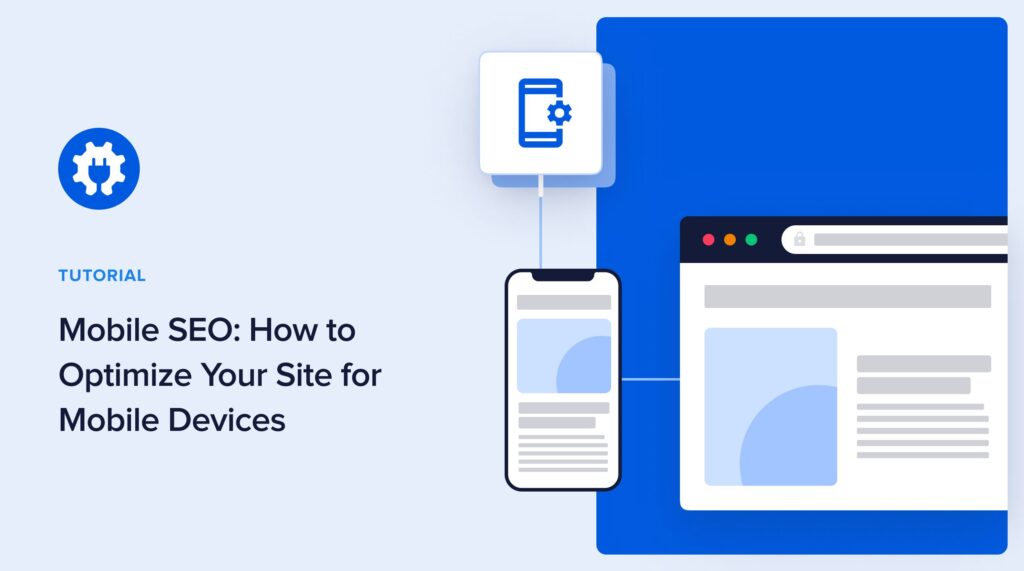

Thanks for addressing this issue in such a thorough manner
Christiana, thank you for providing this feedback! I trust the information was useful.
Your passion for your subject matter shines through in every post. It’s clear that you genuinely care about sharing knowledge and making a positive impact on your readers. Kudos to you!
Hi Genesis: Thank you for your kind words. I’m delighted you found the information of use!